By Boldmethod
05/30/2020
It's frustrating to watch stripe after stripe pass underneath your nose, well past where you planned to touch down. Worse yet, your airspeed just isn't bleeding off. We've all been there.
Whether it's your first solo flight, or you're a seasoned professional pilot, floating down the runway past your touchdown point is a problem that all pilots face. Here's what you need to know about why you're floating, and what you can do to fix it.
Start With A Flying A Good Pattern
All good landings start in the pattern. Try to fly traffic patterns with recommended airspeeds from your airplane's POH. While the FAA offers no guidance for recommended speeds on downwind, according to the Airplane Flying Handbook, when you turn on to your base leg, you should transition to a speed of 1.4 x Vso (again, only if your manufacturer doesn't recommend a speed).
In a 172S, Vso is 40 knots. So according to the FAA, an appropriate base leg speed in a 172S would be 56 knots (1.4 X 40). However, not too many people fly base at that speed in a 172. In fact, many that we know fly base at 80 knots, which is 24 knots faster than what the FAA says.
And the Cirrus SR22T? 90 knots is the manufacturer recommended base leg speed. If you took the FAA's advice instead, based on a Vso of 64 knots, you'd have 90 knots (1.4 X 64). So in that case, the two speeds are right on par.
But how does proper airspeed in the pattern prevent floating? While base speed doesn't directly affect your float, it does give you the best opportunity to fly a stabilized approach, which is critical to a great landing.
There are a million reasons why an approach could become unstable, like not tracking the centerline or flying low, high, fast, or slow. As you turn final, you should begin continuously asking yourself if you're stabilized. If you're constantly changing throttle settings to adjust altitude and airspeed, you might want to consider going around to try again.
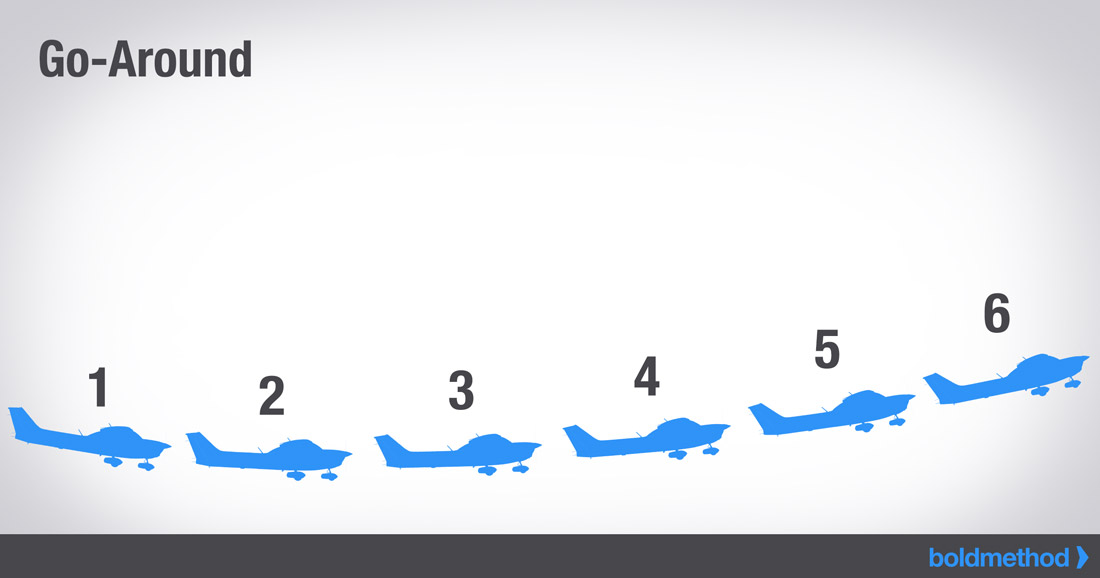
Problem #1: You're Fast
If you're consistently floating during landings, you're probably flying too fast on final approach. It's the most common cause for floated landings. As you round out and flare, extra airspeed prevents your airplane from settling, because you're flying significantly above stall speed.
Touching down with excess airspeed can lead to bounces, ballooning, porpoising and propeller strikes. Review your manufacturer recommended final approach speeds for your airplane, and stick to them.
There's one catch to this, however. Final approach speed isn't the same as threshold crossing speed, and certainly not the speed you should fly into a round out or flare. Once you have no doubt that you'll make the runway, usually on short final just before the threshold, slowly begin reducing the throttle.
As you transition to a round out and flare, you should be continuously decelerating well below final approach speed, somewhere just a few knots above stall speed. Simply put, don't fly your final approach speed all the way to the round out and flare, or you'll be going too fast.
Technique for how and where to reduce power can change dramatically based upon each different type of airplane you fly. Always follow POH guidelines or fly with an instructor onboard as you test out what works best for you.
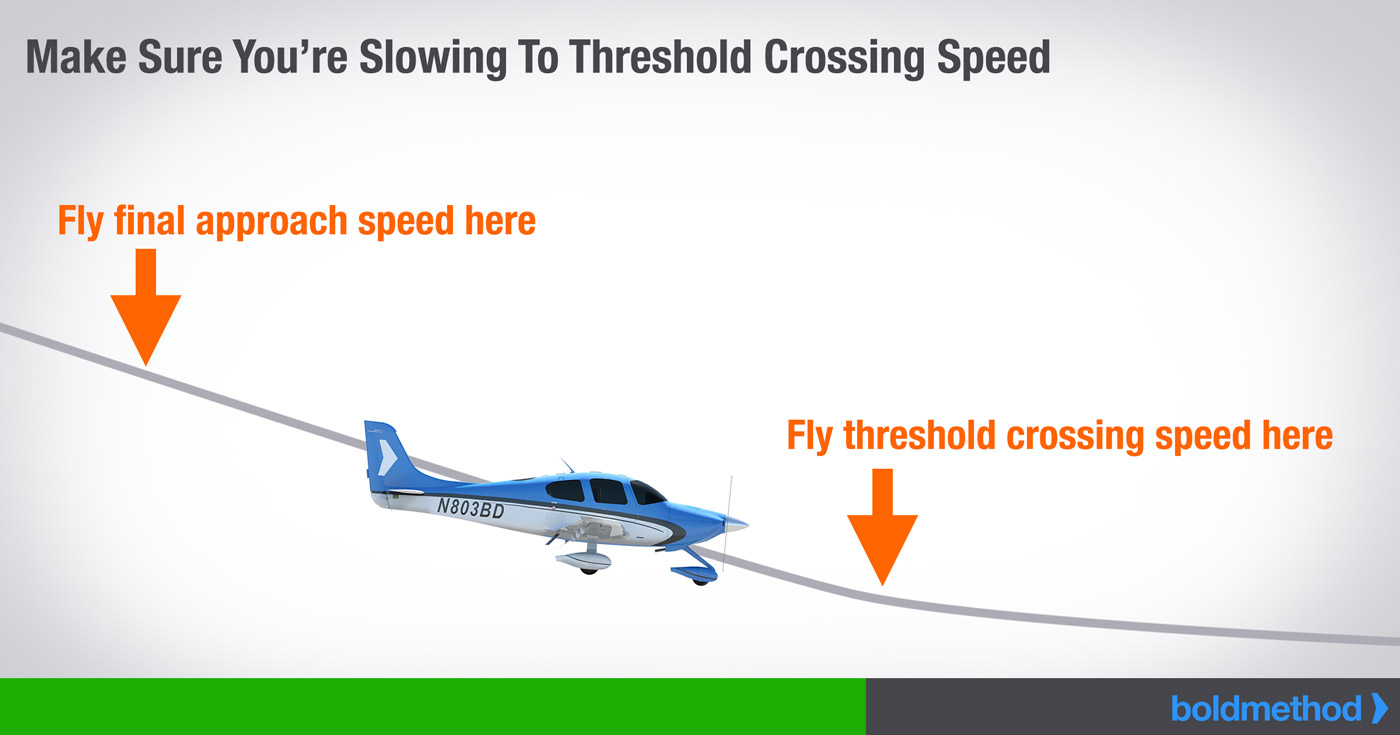
Of course, there are a few exceptions. You'll fly a faster approach speed than recommended with strong, gusting winds. Adding half of the gust factor to your final approach speed will ensure you're flying well above stall speed if you encounter windshear. That's a good thing.
ATC could request a faster final approach speed for traffic spacing, and that's ok too. Just be prepared that if you can't decelerate by short final, you might float a bit on landing. These are some of the only times you should choose to fly significantly faster final approaches.
Problem #2: There's Less Drag To Slow You Down (Ground Effect)
As you get close to the ground (within 1 wingspan or less of the ground), your downwash is reduced, and your wingtip vortices are reduced, which means your induced drag is reduced as well.
This loss of induced drag is the most significant factor affecting your total float. With less drag available, bleeding off even just a few knots of airspeed can take a long time, resulting in a lengthy float down the runway as you decelerate. Learn the full theory here: Ground Effect: What Really Happens When You Get Close To The Ground
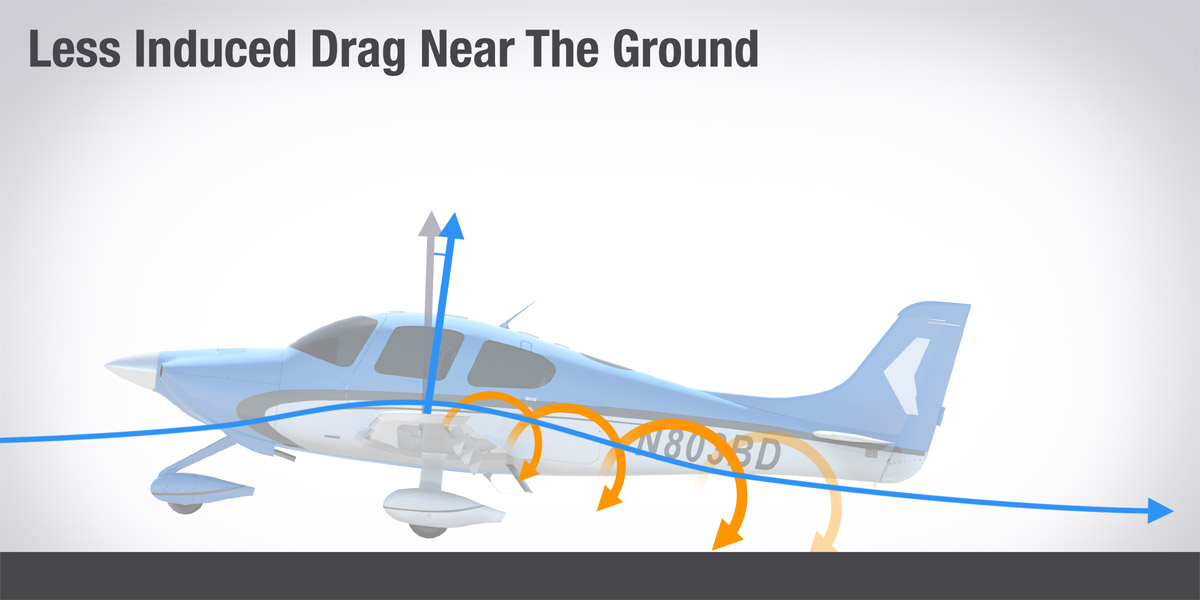
Flying Light vs. Heavy
Floating during landing is a common issue for student pilots on their first few solos. Why? Time to get out your aerodynamics textbook. In simple terms, a lighter-than-normal airplane requires less lift to be generated for flight, lowering your stall speed.
So when solo students fly without an instructor in the airplane, they're flying an airplane with a lower stall speed. By flying the same published airspeeds on final and into the round out and flare, you'll notice extra float because your airplane has to decelerate a few more knots before it gets close to stall speed. Couple that extra few knots with ground effect, and you'll really notice the difference.
On most light aircraft, there's usually just one published approach speed, so you should initially adhere to it. Your manufacturer might not publish a weight-adjusted approach speed table, because they'd rather have pilots fly slightly fast on final, than way too slow.
Once you've gained more experience and comfort, knocking a just few knots off your approach speed when flying light will keep float to a minimum. Check your POH to see if there are multiple approach speeds published for various weights.
Headwinds and Tailwinds
You're flying 10 knots too fast on final approach into a 20 knot headwind. What happens?
With a strong headwind and a fast final approach speed, you'll still float for the same amount of time as you would when landing with no wind at all. But because your ground speed is lower (due to that strong headwind), you just won't float as far down the runway.
The opposite is true for tailwind landings. Tailwinds already dramatically increase your landing distance, so flying even just a few knots too fast will greatly increase your landing distance even more.
How To Fix It
1) To avoid floating, stay on speed. Ensure you're stabilized on final approach, and don't be afraid to go-around if you find yourself jockeying the throttle to maintain altitude and airspeed. If you're fast on final and haven't already, add full flaps. Adding as much drag as possible will help negate the drag loss during ground effect.
2) Based on your landing distance, set a go-around point before you cross the threshold. If your wheels aren't down by that point, initiate a go-around.
3) If you're already in the round out just a few feet above the runway and still too fast, make sure to flare slowly and smoothly. Hold pitch attitude the same and let the aircraft decelerate before starting a nose-up pitch for your flare. Ballooning and floating go hand in hand when pilots try to flare as they carry excessive airspeed.
4) Don't overfocus on your touchdown point if you're floating. The worst thing you can do is push the nose down in an attempt to hit your touchdown point. Driving the airplane into the ground nose first can cause a prop strike, hard landing, or porpoise. Instead, just pay attention to the go-around point you've set.
Preventing Float
Floating comes down to two primary factors: speed and drag. If you're fast and in ground effect, it'll take awhile for you to decelerate. No matter how bad you try to hit your touchdown point, the airplane naturally keeps flying since you're well above stall speed.
Take The Next Step...
Do you have a perfect takeoff and landing every time? Neither do we. That's why we built our Mastering Takeoffs and Landings online course.
You'll learn strategies, tactics and fundamental principles that you can use on your next flight, and just about any takeoff or landing scenario you could imagine. Even better, the course is full of tools you can come back to throughout your flying career.




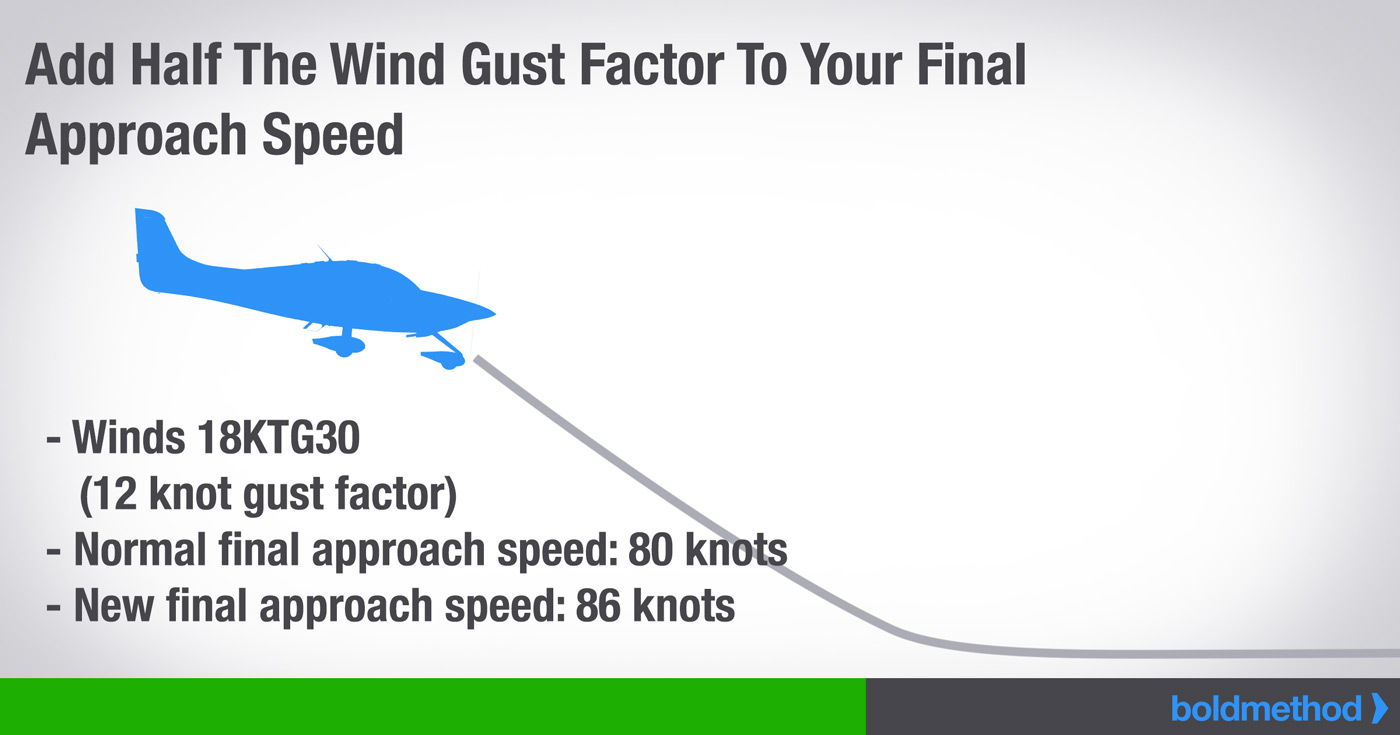
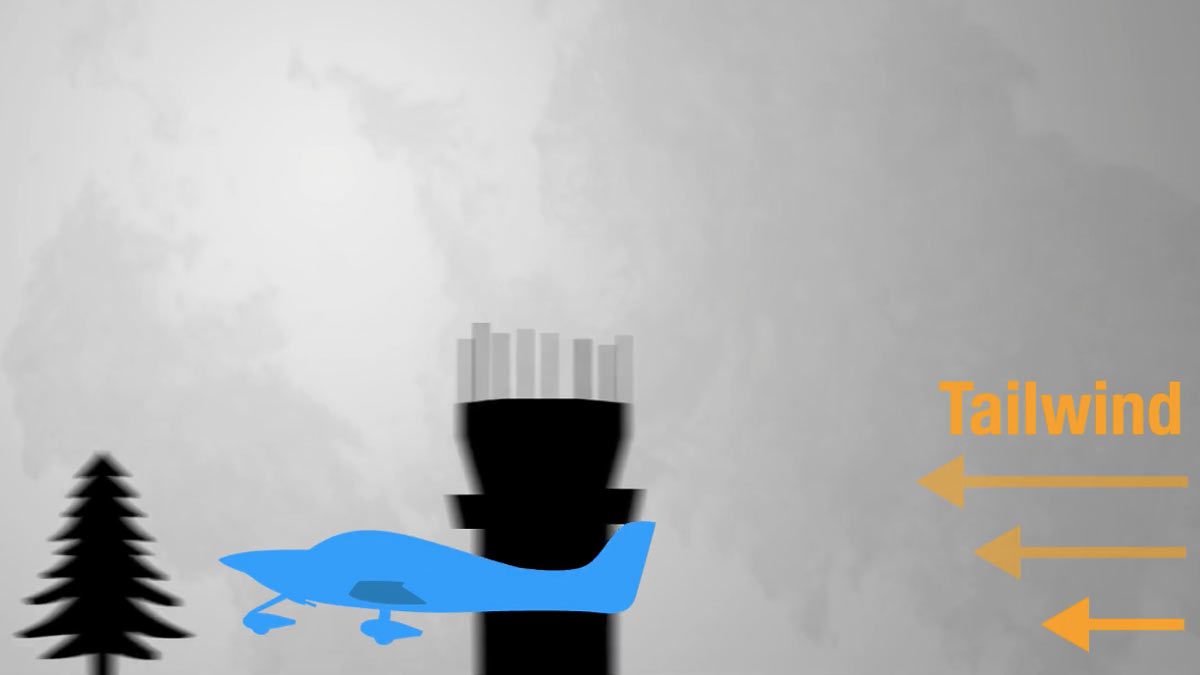
No hay comentarios:
Publicar un comentario
Espero atento tus comentarios